
The ‘Biblical Origins’ of the Etruscans in the 16th Century CE and Their Impact on European Politics
august 2022 | Vol. 10.8
By Maurizio Harari
In 1536-37, Guillaume Postel – in his time the top French expert on Near Eastern languages – went as an interpreter to Holy Land and the Ottoman court in Constantinople with the Ambassador of France. He was entrusted with the task of collecting manuscripts for King Francis I, assured of his appointment as regius interpres and lector at the Institut Royal in Paris.
Having been impressed by the highly developed Islamic civilization, Postel conceived a utopian programme of universal harmony, publishing in 1540 the essay De la république des Turcs, where he defined himself as a cosmopolite (note that this is the first occurrence in French literature of this significant word). Unfortunately, Postel did not encounter especially enthusiastic approval from the king. After a few years he opted for a missionary and cosmopolitan lifestyle, letting go of his academic position in Paris to move throughout Europe.
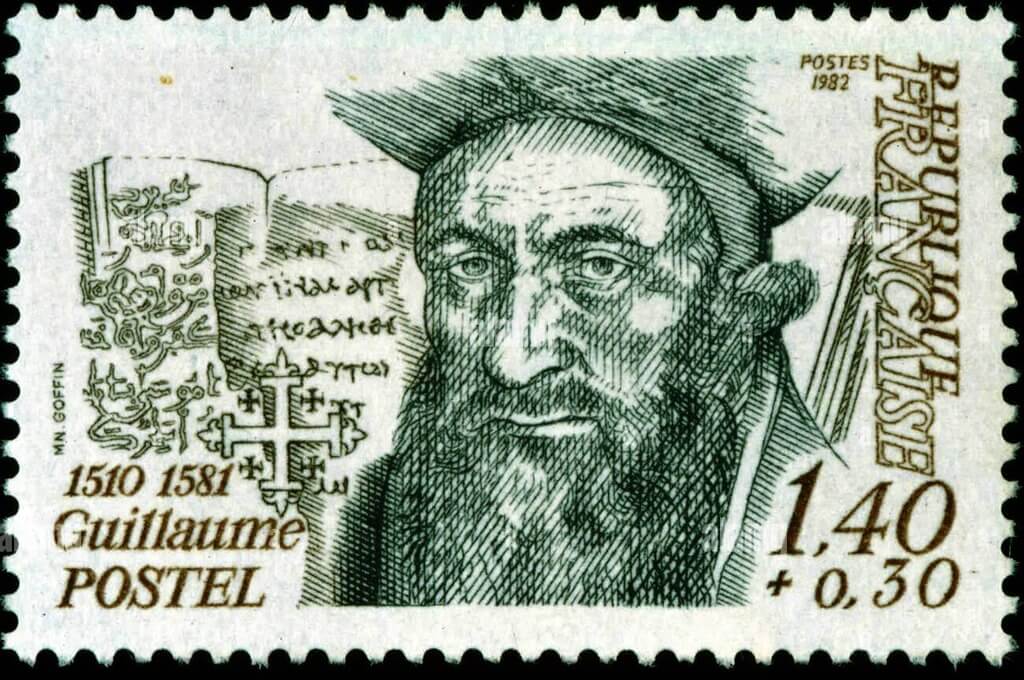
Guillaume Postel was honored for his intellectual contributions by the French government with a stamp in 1982, designed by Marie-Noëlle Goffin. © Marie-Noélle Goffin.
Living in Rome in 1544, he became acquainted with the renowned Kabbalist Johann Albrecht von Widmannstadt, a protégé of Cardinal Egidio Antonini of Viterbo. Giles of Viterbo, who like Widmannstadt had been a pupil of Baruch of Beneventum, was the author of the Historia viginti saeculorum, where he asserted that the Etruscans had originated from Chaldea. This created a sort of Sacred History parallel with that of the Jews: Jason and Janus, for instance, would have been peers of Noah, and Hercules was compared with Samson. There were exactly twelve Etruscan cities, just as the number of the Apostles.
All this conformed to the revival of interest in Classical Antiquity taking place under the de’Medicis and the humanistically oriented Pope Leo X (who was the son of Lorenzo the Magnificent). A similar pseudo-historical theory, elaborated by another Viterbo scholar, Annius, emphasized Etruscan primacy among the other peoples of ancient Italy and attempted to link both pagan and Christian history in a universalistic framework. In fact, in 1498 Annius had first identified Janus as Noah, trying to contextualize Etruscan origins in a time immediately following the Great Flood. He also interpreted the institutional role of the Etruscan rulers called Lucumons in an absolute monarchist sense.
One must consider that Postel, at this stage of his complicated intellectual adventure, was attempting, through the study of ancient Near Eastern languages, to reconstruct primordial cultural unity. This unity presumably existed before and beyond any deceptive modern distinctions between West and East. In this sense, only Etruscan studies seemed to give the concrete possibility of finding the crucial join between paganism and Christianity.
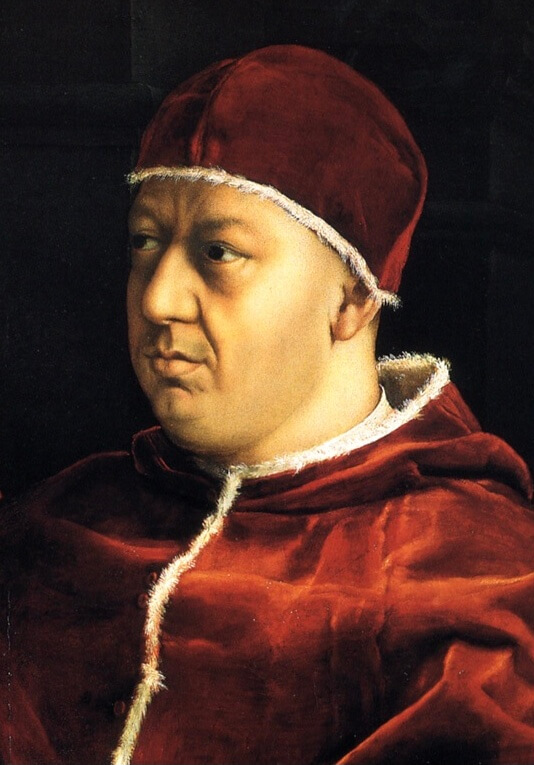
Pope Leo X, by Rafaello, 1518. Public Domain.
In 1547 Postel was living in Venice as chaplain of the Hospital of Destitute People at Saint John and Paul’s Church. Here he would meet the celebrated Mother Joan, who appeared to Postel as a sort of Eve figure, returned from heaven to rescue the world, in the ideological frame of a feminine Messianic obsession. At the time of Mother Joan’s death, between 1549 and 1551, Postel was travelling again throughout of Near Eastern countries – from Cairo to Damascus, Jerusalem, Constantinople and again to Jerusalem and Constantinople – always in search for Old and New Testament texts and, more generally, other documents suitable for proving his religious insights.
Postel’s essay on Etruria and Etruscans (De Etruriae regionis, Florence 1551) was composed during this second trip to the Orient, likely in 1550. This is clearly asserted in Postel’s dedicatory epistula, addressed to Duke Cosimo de’Medici. In Postel’s view, the Etruscans originated from a migration of Assyrians, dated just after the Great Flood, led by Noah, alias Janus. Janus was saved by virtue of his famous Ark and introduced Near Eastern beliefs and cults into Italy; his two-faced look signifies memory of the past and prophetic wisdom. The sons of Janus are called by a strange mystic name, the Razi Hinui.

Title page of De Etruriae regionis, by Guillaume Postel (1501).
Only two were the eldest and favourite Razi, but together they numbered, as usual, twelve. That is why Etruria has been divided in twelve provinces and their Lucumons belonged to twelve tribes (just as in Israel). This bizarre story could explain the major reason for Etruscan primacy over Rome. Moreover, Janus was buried on the Janiculum (the tallest hill west of Rome), where – as in a sort of sancta sanctorum – the burial of King Numa (the legendary second king of Rome) was later placed. Finally, the same place was where Saint Peter was crucified upside down, so that his soul might be exhaled over the venerable remains of Noah’s tomb.
In this way ancient Rome inherited the fabricated Noah legacy of the Etruscans. But the 16th century was also the era of Florence and Tuscany, direct heirs of the mythological Janigenes (the posterity of Janus). Duke Cosimo de’Medici was certainly able to display a fully legitimate genealogy in to Etruscanize his own country.
Unscrupulous use of Annius’s apocryphal sources allowed scholars to connect Biblical tradition with Western civilization. The equation of Noah and Janus also posited the antecedence of Italian civilization to those of the Phoenicians and Greeks. Moreover, the mythological descendents of Noah/Janus, namely Hispanus, Gallus and Germanus, dutifully expanded Italian primacy throughout Europe.
This pseudo-historical reconstruction was strongly destabilizing for the traditional idea of Roman imperial unity, the successor of Hellenism, and gave ideological validation to the pluralism of the modern city and then nation-state. In particular, the French monarchy could finally confront – independently from a Romano-centric model – its ancient ‘druid’ past, in the context of its ideological competition with the Habsburg dynasty. Even an alliance with Muslims might be accepted, on the basis of their shared lineage from Father Abraham. Annius’s misleading etruscology was thus useful for French monarchist patriotism, as the Gauls became descendants of Noah.
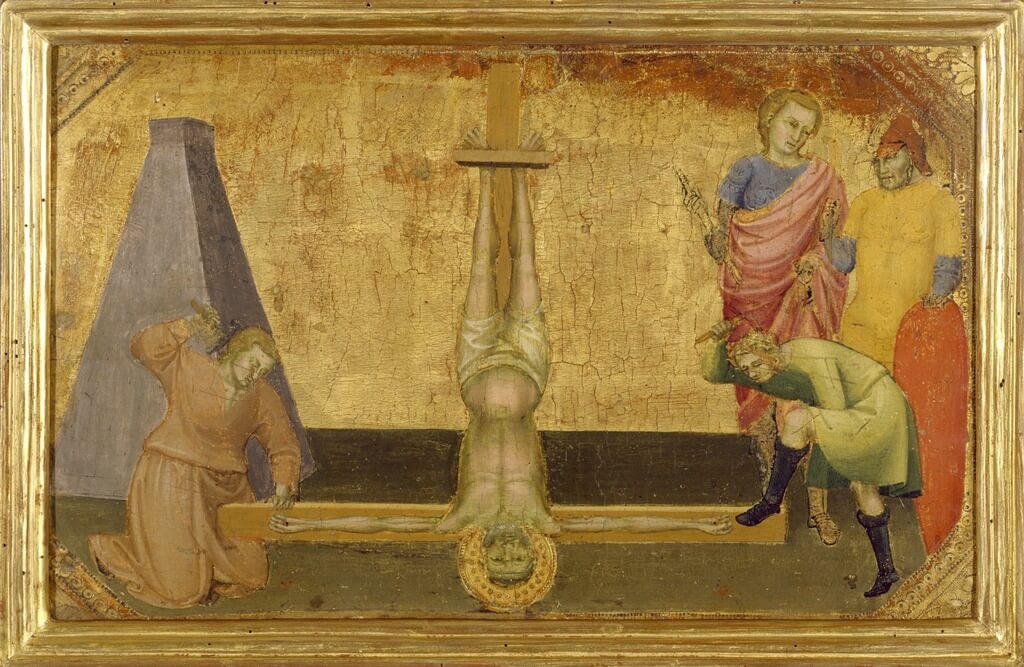
The Crucifixion of Saint Peter, Lorenzo Monaco (Italian, ca. 1370-1425),The Walters Art Museum. CC0.
Postel wrote his De Etruriae regionis in the Levant, visiting places that appeared highly symbolic. In Jerusalem’s urban landscape Jesus Christ died on the same Golgotha hill, where Adam had been buried; Saint Peter was crucified in Rome not far from Noah’s Janiculum tomb. The two, therefore, were the Pope’s capital cities: the capital of Melchizedek (Jerusalem), more spiritual, placed in Holy Land; and a second one in Italy, founded by Noah, more temporal, on the Etruscan bank of Rome, the Vatican hill. In this way, universal history, moving from the Biblical Orient, seemed to converge into a purely Western and European triangle: Papal Rome, Medici’s Etruria, and Valois’s Gaul.
The chronological starting point of this pseudo-historical model, defended by Postel – who criticized ancient Greek literature as fabulous and deceptive – was obviously the Great Flood, whose memory had been preserved by all the religious communities. Even a secular writer such as Pliny the Elder claimed that the Umbrians – an ethnic name derived from the Latin word meaning ‘rain’ – were the most ancient people in Italy.
Thus, yet another Sacred History, started by the ethnogenesis of the Gauls, rescued from the Great Flood as offspring of Gomerus, son of Japetus or Italus. Therefore, it was providential that a Gallic kingdom stood opposite to Rome. Postel’s Etruscan interests – developed in Italy and the Near East – and thus birthed a new ‘patriotism’ centered in Paris, as well as Rome and Florence.
Maurizio Harari is a member of the Dipartimento di Studi Umanistici at the Università degli Studi di Pavia.
How to cite this article
Harari, M. 2022. “The ‘Biblical Origins’ of the Etruscans in the 16th Century CE and Their Impact on European Politics.” The Ancient Near East Today 10.8. Accessed at: https://anetoday.org/harari-etruscans-politics/.
Want to learn more?
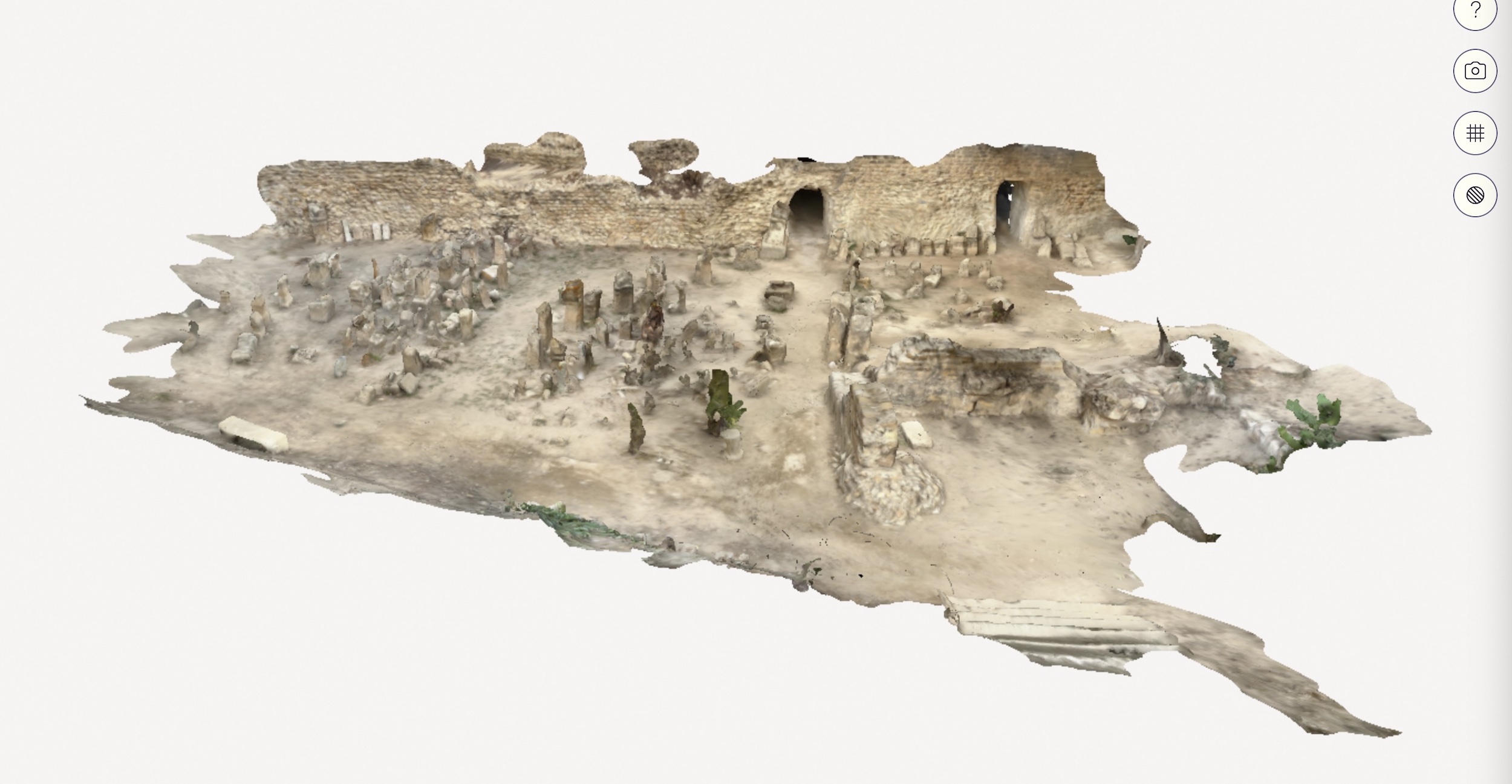
Putting Carthaginian Stelae Back Into Context: The ASOR Punic Project Digital Initiative
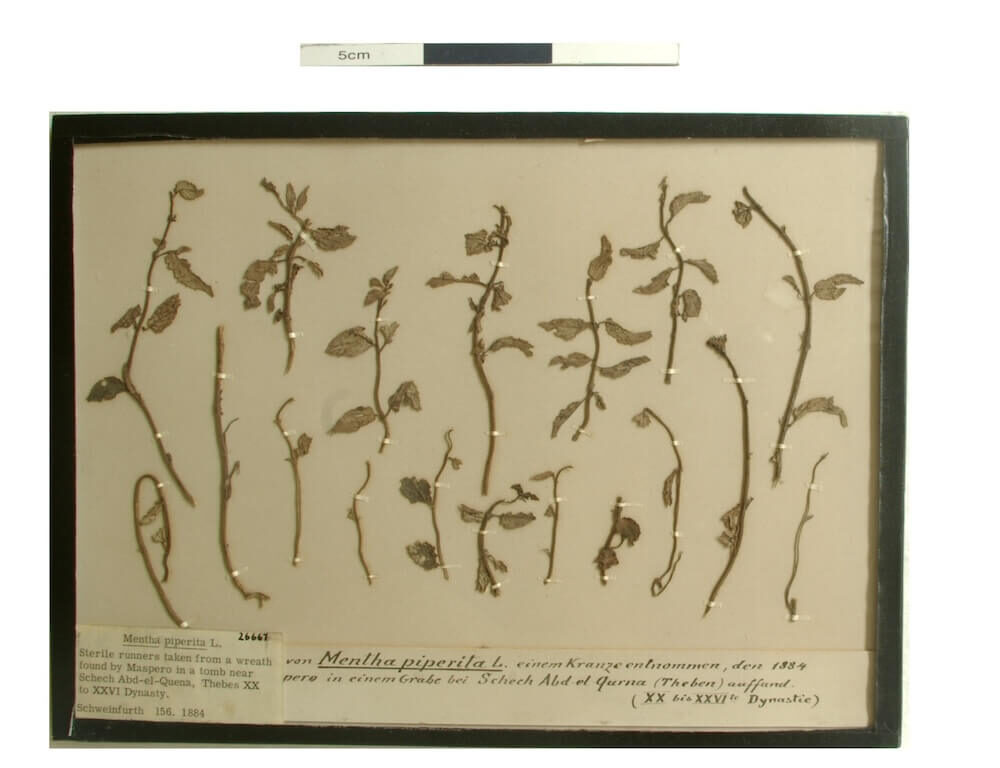
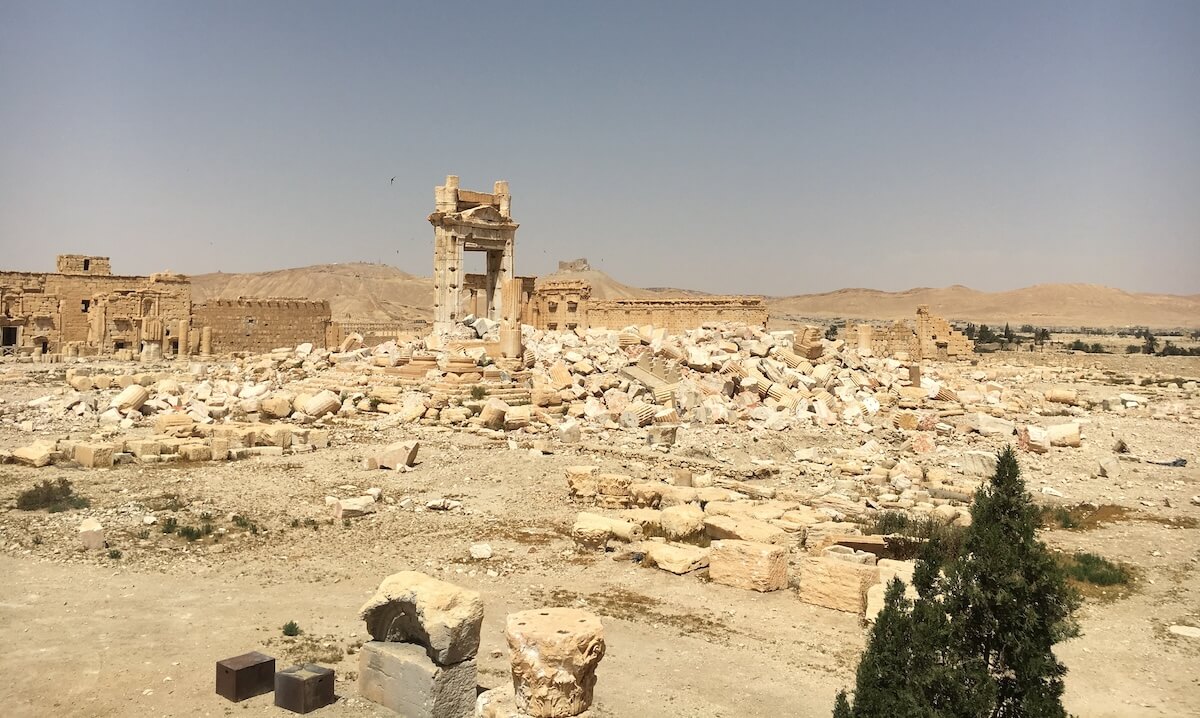
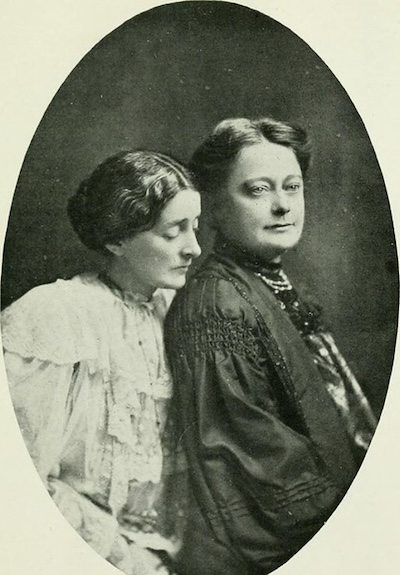

Post a comment